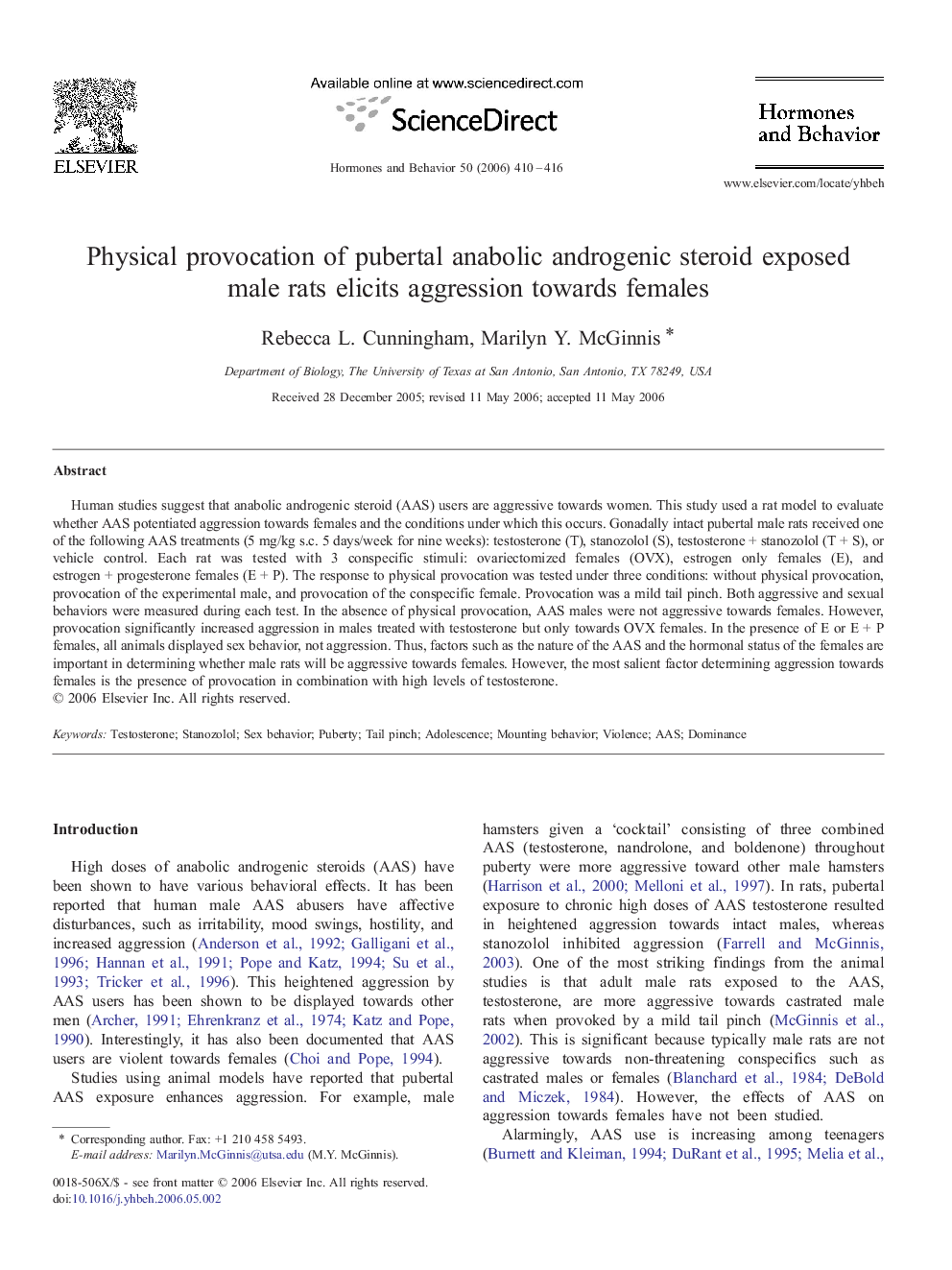| کد مقاله | کد نشریه | سال انتشار | مقاله انگلیسی | نسخه تمام متن |
|---|---|---|---|---|
| 323899 | 540816 | 2006 | 7 صفحه PDF | دانلود رایگان |

Human studies suggest that anabolic androgenic steroid (AAS) users are aggressive towards women. This study used a rat model to evaluate whether AAS potentiated aggression towards females and the conditions under which this occurs. Gonadally intact pubertal male rats received one of the following AAS treatments (5 mg/kg s.c. 5 days/week for nine weeks): testosterone (T), stanozolol (S), testosterone + stanozolol (T + S), or vehicle control. Each rat was tested with 3 conspecific stimuli: ovariectomized females (OVX), estrogen only females (E), and estrogen + progesterone females (E + P). The response to physical provocation was tested under three conditions: without physical provocation, provocation of the experimental male, and provocation of the conspecific female. Provocation was a mild tail pinch. Both aggressive and sexual behaviors were measured during each test. In the absence of physical provocation, AAS males were not aggressive towards females. However, provocation significantly increased aggression in males treated with testosterone but only towards OVX females. In the presence of E or E + P females, all animals displayed sex behavior, not aggression. Thus, factors such as the nature of the AAS and the hormonal status of the females are important in determining whether male rats will be aggressive towards females. However, the most salient factor determining aggression towards females is the presence of provocation in combination with high levels of testosterone.
Journal: Hormones and Behavior - Volume 50, Issue 3, September 2006, Pages 410–416